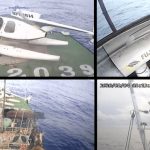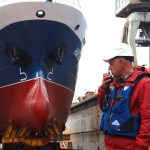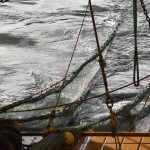Cod stocks
The Commission is proposing an increase of 15 % in the EU Total Allowable Catch (TAC) for eastern Baltic cod, from 51 267 tonnes to 58 957 tonnes, and an increase of 6 % in the TAC on western Baltic cod, from 17 700 tonnes to 18 800 tonnes. The Eastern cod stock continues to benefit from strong recruitment, as well as improved discipline in the application of the multi-annual plan. For the Western stock the proposed TAC increases are in line with the provisions of the multi-annual plan, which aims to adapt fishing mortality to a level that is sustainable in the long term.
Herring
The Western herring stock has declined further and reached a new record low level. This is due to the continuous decrease of incoming year classes in the last years and very high fishing pressure. For a number of years, TACs for this stock have been set well above scientific advice and fishing pressure has even increased. In the Skagerrak the Baltic Sea herring intermingles with the North Sea herring stock, which also suffers from poor recruitment but is in a better state. It is therefore important to set the TAC in the Skagerrak at a level that will adequately protect the Baltic Sea stock, and not at a level that only reflects the abundance of the North Sea stock.
Having taken the economic situation of the sector into consideration, the Commission is proposing a reduction of 30 % in the TAC for Western herring, from 22 690 tonnes, to 15 884 tonnes. Other pelagic stocks have seen relatively low recruitment as well, requiring an adaptation of fishing pressure and thus reductions in the TAC. The Commission therefore proposes a 28 % reduction in fishing possibilities for the Central Herring stock (from 126 380 tonnes to 91 640 tonnes) and a reduction of 30% for sprat (from 379 900 tonnes to 265 969 tonnes).
Salmon
Given the decreasing survival of Baltic salmon juveniles at sea and the poor status of some of the river stocks, which are subject to mixed stock fishing within the main basin, the TAC in the main basin has been reduced by 15%. For the Gulf of Finland, no TAC reduction has been proposed as the causes of the problem in this area need to be addressed primarily by national management measures in inland waters. The issue will be addressed further with concerned Member States in the context of the future Baltic salmon management plan, which is to be tabled before the end of 2010.
The Commission’s proposals follow the principles and rules outlined in the Communication ” Consultation on Fishing Opportunities for 2011″ in light of the latest advice from the Scientific, Technical and Economic Committee on Fisheries (STECF), together with input from stakeholders, in particular the Baltic Sea Regional Advisory Council.








